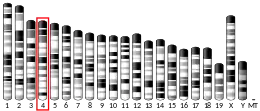| ESPN | |||||||||||||||||||||||||||||||||||||||||||||||||||
|---|---|---|---|---|---|---|---|---|---|---|---|---|---|---|---|---|---|---|---|---|---|---|---|---|---|---|---|---|---|---|---|---|---|---|---|---|---|---|---|---|---|---|---|---|---|---|---|---|---|---|---|
| Identifiers | |||||||||||||||||||||||||||||||||||||||||||||||||||
| Aliases | ESPN, DFNB36, LP2654, Espin, USH1M | ||||||||||||||||||||||||||||||||||||||||||||||||||
| External IDs | OMIM: 606351 MGI: 1861630 HomoloGene: 23164 GeneCards: ESPN | ||||||||||||||||||||||||||||||||||||||||||||||||||
| |||||||||||||||||||||||||||||||||||||||||||||||||||
| |||||||||||||||||||||||||||||||||||||||||||||||||||
| |||||||||||||||||||||||||||||||||||||||||||||||||||
| |||||||||||||||||||||||||||||||||||||||||||||||||||
| |||||||||||||||||||||||||||||||||||||||||||||||||||
| Wikidata | |||||||||||||||||||||||||||||||||||||||||||||||||||
| |||||||||||||||||||||||||||||||||||||||||||||||||||
Espin, also known as autosomal recessive deafness type 36 protein or ectoplasmic specialization protein, is a protein that in humans is encoded by the ESPN gene.[5] Espin is a microfilament binding protein.
Function
Espin is a multifunctional actin-bundling protein. It plays a major role in regulating the organization, dimensions, dynamics, and signaling capacities of the actin filament-rich, microvillus-type specializations that mediate sensory transduction in various mechanosensory and chemosensory cells.[5]
Clinical significance
Mutations in this gene are associated with autosomal recessive neurosensory deafness, autosomal dominant sensorineural deafness without vestibular involvement, and DFNB36.[5]
References
- 1 2 3 GRCh38: Ensembl release 89: ENSG00000187017 - Ensembl, May 2017
- 1 2 3 GRCm38: Ensembl release 89: ENSMUSG00000028943 - Ensembl, May 2017
- ↑ "Human PubMed Reference:". National Center for Biotechnology Information, U.S. National Library of Medicine.
- ↑ "Mouse PubMed Reference:". National Center for Biotechnology Information, U.S. National Library of Medicine.
- 1 2 3 "Entrez Gene: espin".
Further reading
- Naz S, Griffith AJ, Riazuddin S, et al. (2004). "Mutations of ESPN cause autosomal recessive deafness and vestibular dysfunction". J. Med. Genet. 41 (8): 591–5. doi:10.1136/jmg.2004.018523. PMC 1735855. PMID 15286153.
- Boulouiz R, Li Y, Soualhine H, et al. (2008). "A novel mutation in the Espin gene causes autosomal recessive nonsyndromic hearing loss but no apparent vestibular dysfunction in a Moroccan family". Am. J. Med. Genet. A. 146A (23): 3086–9. doi:10.1002/ajmg.a.32525. PMID 18973245. S2CID 33443367.
- Cosetti M, Culang D, Kotla S, et al. (2008). "Unique transgenic animal model for hereditary hearing loss". Ann. Otol. Rhinol. Laryngol. 117 (11): 827–33. doi:10.1177/000348940811701106. PMC 3409696. PMID 19102128.
- Hosgood HD, Zhang L, Shen M, et al. (2009). "Association between genetic variants in VEGF, ERCC3 and occupational benzene haematotoxicity". Occup Environ Med. 66 (12): 848–53. doi:10.1136/oem.2008.044024. PMC 2928224. PMID 19773279.
- Bonaldo MF, Lennon G, Soares MB (1996). "Normalization and subtraction: two approaches to facilitate gene discovery". Genome Res. 6 (9): 791–806. doi:10.1101/gr.6.9.791. PMID 8889548.
- Donaudy F, Zheng L, Ficarella R, et al. (2006). "Espin gene (ESPN) mutations associated with autosomal dominant hearing loss cause defects in microvillar elongation or organisation". J. Med. Genet. 43 (2): 157–61. doi:10.1136/jmg.2005.032086. PMC 2564636. PMID 15930085.
- Bartles JR, Zheng L, Li A, et al. (1998). "Small espin: a third actin-bundling protein and potential forked protein ortholog in brush border microvilli". J. Cell Biol. 143 (1): 107–19. doi:10.1083/jcb.143.1.107. PMC 2132824. PMID 9763424.
- Sekerková G, Loomis PA, Changyaleket B, et al. (2003). "Novel espin actin-bundling proteins are localized to Purkinje cell dendritic spines and bind the Src homology 3 adapter protein insulin receptor substrate p53". J. Neurosci. 23 (4): 1310–9. doi:10.1523/JNEUROSCI.23-04-01310.2003. PMC 2854510. PMID 12598619.
- Bartles JR, Wierda A, Zheng L (1996). "Identification and characterization of espin, an actin-binding protein localized to the F-actin-rich junctional plaques of Sertoli cell ectoplasmic specializations". J. Cell Sci. 109 (6): 1229–39. doi:10.1242/jcs.109.6.1229. PMID 8799813.
- Wiemann S, Weil B, Wellenreuther R, et al. (2001). "Toward a catalog of human genes and proteins: sequencing and analysis of 500 novel complete protein coding human cDNAs". Genome Res. 11 (3): 422–35. doi:10.1101/gr.GR1547R. PMC 311072. PMID 11230166.
- Loomis PA, Kelly AE, Zheng L, et al. (2006). "Targeted wild-type and jerker espins reveal a novel, WH2-domain-dependent way to make actin bundles in cells". J. Cell Sci. 119 (Pt 8): 1655–65. doi:10.1242/jcs.02869. PMC 2854011. PMID 16569662.
- Gregory SG, Barlow KF, McLay KE, et al. (2006). "The DNA sequence and biological annotation of human chromosome 1". Nature. 441 (7091): 315–21. Bibcode:2006Natur.441..315G. doi:10.1038/nature04727. PMID 16710414.
- Zheng L, Sekerková G, Vranich K, et al. (2000). "The deaf jerker mouse has a mutation in the gene encoding the espin actin-bundling proteins of hair cell stereocilia and lacks espins". Cell. 102 (3): 377–85. doi:10.1016/S0092-8674(00)00042-8. PMC 2850054. PMID 10975527.
- Wan D, Gong Y, Qin W, et al. (2004). "Large-scale cDNA transfection screening for genes related to cancer development and progression". Proc. Natl. Acad. Sci. U.S.A. 101 (44): 15724–9. Bibcode:2004PNAS..10115724W. doi:10.1073/pnas.0404089101. PMC 524842. PMID 15498874.
External links
- espin+protein,+human at the U.S. National Library of Medicine Medical Subject Headings (MeSH)
This article incorporates text from the United States National Library of Medicine, which is in the public domain.



